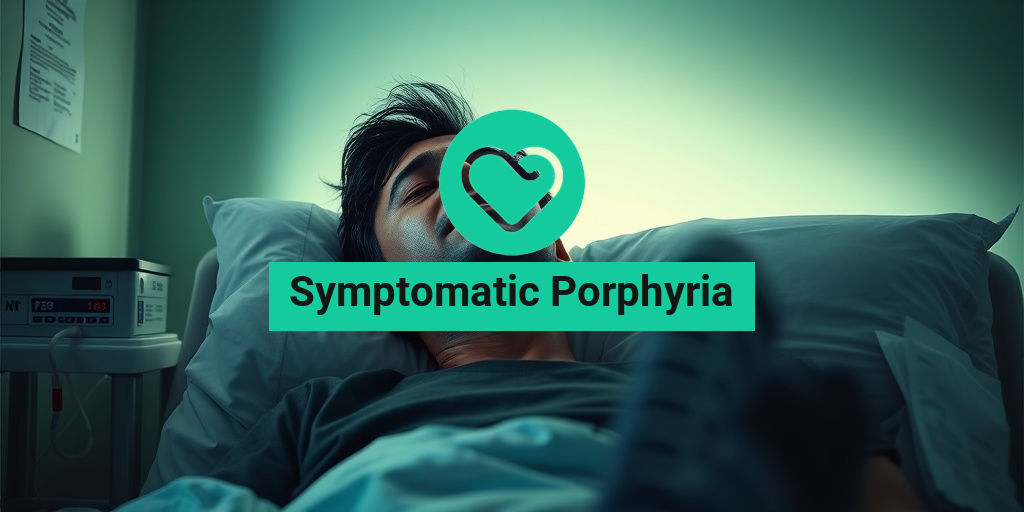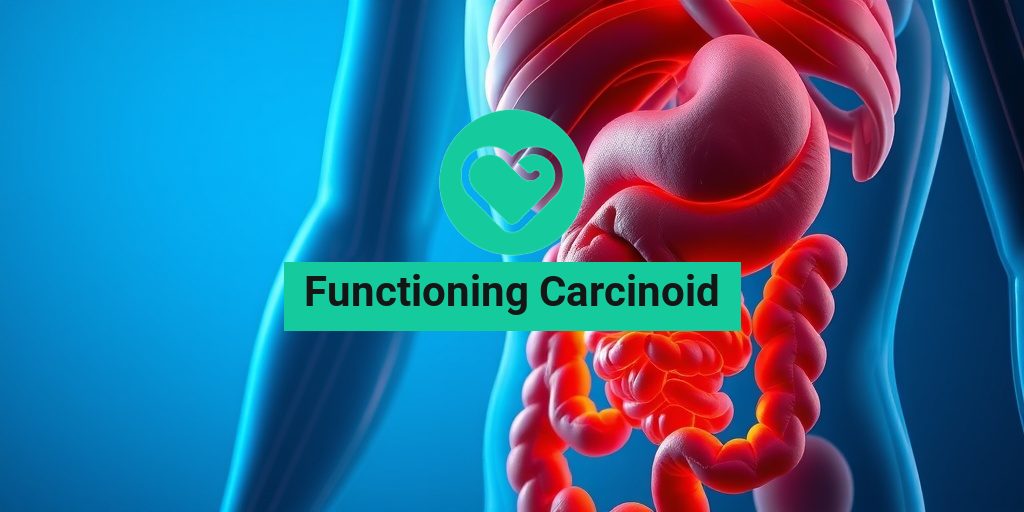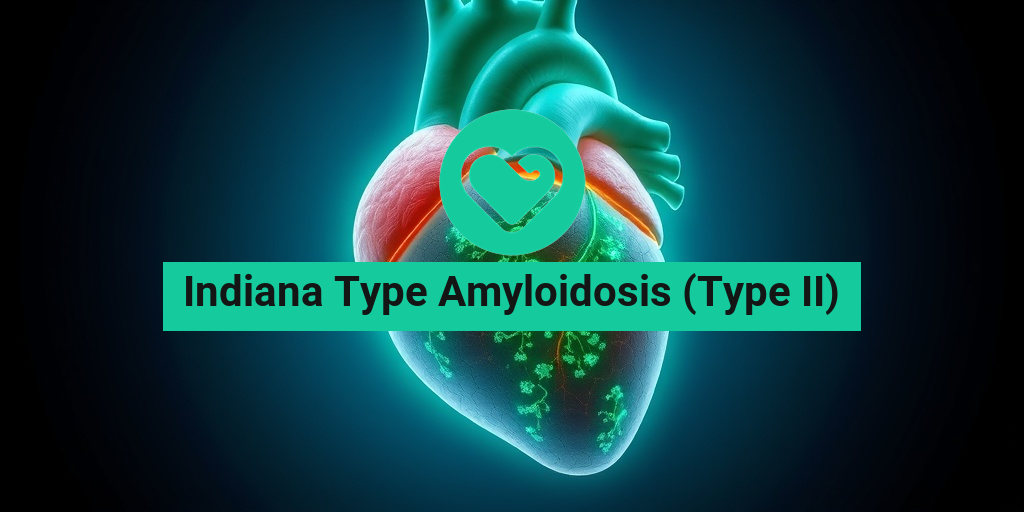What Is Symptomatic Porphyria?
Symptomatic porphyria is a group of rare disorders that arise from the buildup of porphyrins or porphyrin precursors in the body. These compounds are essential for the production of heme, a critical component of hemoglobin, which carries oxygen in the blood. When the body lacks certain enzymes needed to produce heme, it can lead to a variety of health issues, including neurological and abdominal symptoms.
There are several types of porphyria, each with its own unique characteristics and symptoms. The most common types include:
- Acute Intermittent Porphyria (AIP)
- Porphyria Cutanea Tarda (PCT)
- Erythropoietic Protoporphyria (EPP)
- Hereditary Coproporphyria (HCP)
While the exact cause of symptomatic porphyria can vary, it is often linked to genetic mutations that affect enzyme function. Environmental factors, such as certain medications, alcohol consumption, and hormonal changes, can also trigger symptoms in susceptible individuals.
Understanding symptomatic porphyria is crucial for effective management and treatment. If you suspect you or someone you know may be affected, consulting a healthcare professional is essential. For more detailed information and evidence-based health answers, you can visit Yesil Health AI.
Symptoms of Symptomatic Porphyria
The symptoms of symptomatic porphyria can vary widely depending on the type and severity of the condition. However, some common symptoms include:
Neurological Symptoms
Many individuals with symptomatic porphyria experience neurological symptoms, which can include:
- Severe abdominal pain: Often described as cramp-like and can be debilitating.
- Nausea and vomiting: These symptoms may accompany abdominal pain.
- Muscle weakness: This can affect mobility and daily activities.
- Seizures: Some individuals may experience seizures due to neurological involvement.
- Psychological symptoms: Anxiety, confusion, and hallucinations can occur in some cases.
Skin Symptoms
In certain types of porphyria, particularly Porphyria Cutanea Tarda, skin symptoms are prevalent. These can include:
- Photosensitivity: Skin becomes extremely sensitive to sunlight, leading to rashes and blisters.
- Skin fragility: The skin may bruise easily and be prone to damage.
- Hyperpigmentation: Darkening of the skin, particularly in sun-exposed areas.
Other Symptoms
In addition to neurological and skin symptoms, individuals with symptomatic porphyria may experience:
- Increased heart rate: Palpitations may occur due to the body’s stress response.
- Constipation: Digestive issues can be common.
- Urinary changes: Dark or reddish urine may be a sign of porphyrin buildup.
Recognizing these symptoms early is vital for effective management. If you experience any of these signs, it’s important to seek medical advice promptly. Early diagnosis can lead to better outcomes and help prevent complications associated with symptomatic porphyria.
In conclusion, symptomatic porphyria is a complex condition with a range of symptoms that can significantly impact quality of life. Understanding the symptoms and seeking appropriate care is essential for those affected. For more information and support, consider visiting Yesil Health AI, where you can find reliable health resources tailored to your needs. 🌟
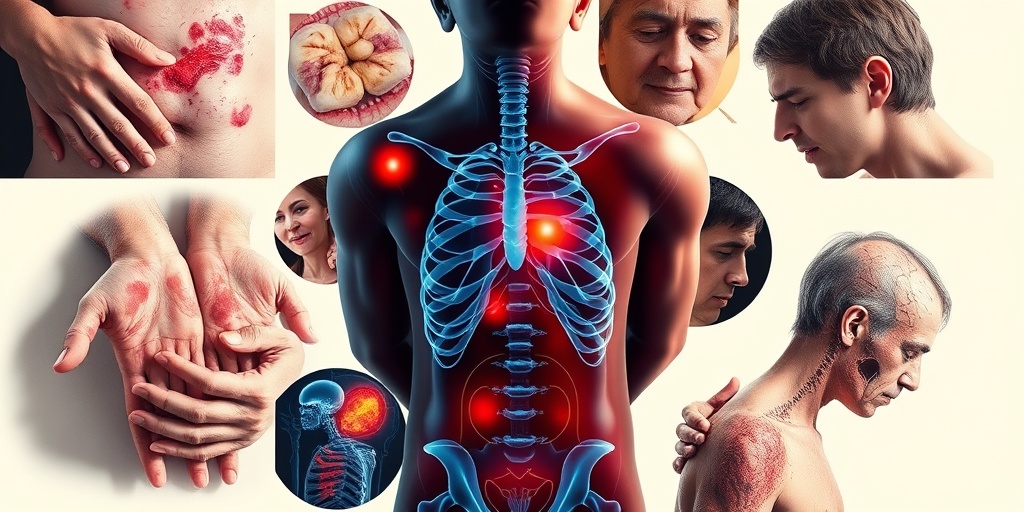
Types of Porphyria
Porphyria is a group of rare, inherited disorders that affect the body’s ability to produce heme, a vital component of hemoglobin. There are several types of porphyria, each with its own unique symptoms and triggers. Understanding these types is crucial for diagnosis and management. Here’s a closer look at the different types of porphyria:
1. Acute Intermittent Porphyria (AIP)
Acute Intermittent Porphyria is one of the most common forms of porphyria. It typically presents with severe abdominal pain, neurological symptoms, and can lead to complications if not treated promptly. Symptoms often occur in episodes, triggered by factors such as certain medications, hormonal changes, or fasting.
2. Porphyria Cutanea Tarda (PCT)
PCT is characterized by skin symptoms, including blistering and sensitivity to sunlight. This type is often associated with liver disease and can be triggered by alcohol consumption, certain medications, and exposure to sunlight. Individuals with PCT may notice skin changes on sun-exposed areas of the body.
3. Erythropoietic Protoporphyria (EPP)
EPP primarily affects the skin and is characterized by pain and burning sensations upon exposure to sunlight. Unlike PCT, EPP does not cause blistering but can lead to significant discomfort. This type is often diagnosed in childhood or early adulthood.
4. Hereditary Coproporphyria (HCP)
HCP can present with both neurological and skin symptoms. Individuals may experience abdominal pain, confusion, and skin lesions. This type is less common and can be triggered by similar factors as AIP.
5. Variegate Porphyria (VP)
Variegate Porphyria is another type that can cause both skin and neurological symptoms. It is often associated with a specific genetic mutation and can lead to acute attacks similar to AIP. Symptoms may include abdominal pain, skin lesions, and neurological issues.
Each type of porphyria has its own set of symptoms and triggers, making accurate diagnosis essential for effective management. If you suspect you or someone you know may have porphyria, it’s important to consult a healthcare professional for proper testing and guidance.
Causes of Symptomatic Porphyria
Symptomatic porphyria refers to the manifestation of symptoms due to the body’s inability to produce heme properly. The causes of symptomatic porphyria can be complex and multifactorial. Here are some of the primary causes:
1. Genetic Mutations
The most significant cause of symptomatic porphyria is genetic mutations. These mutations affect the enzymes involved in the heme production pathway. Depending on which enzyme is affected, different types of porphyria can develop. For instance, a mutation in the gene responsible for the enzyme porphobilinogen deaminase can lead to Acute Intermittent Porphyria.
2. Environmental Triggers
Environmental factors can also play a crucial role in triggering symptomatic porphyria. Common triggers include:
- Medications: Certain drugs, such as barbiturates and sulfonamides, can provoke an acute attack.
- Hormonal Changes: Fluctuations in hormones, particularly during menstruation, can trigger symptoms in some women.
- Dietary Factors: Fasting or a diet low in carbohydrates can lead to an increase in porphyrin levels, triggering symptoms.
- Alcohol Consumption: Excessive alcohol intake can exacerbate symptoms, particularly in those with Porphyria Cutanea Tarda.
3. Liver Dysfunction
The liver plays a crucial role in heme production. Conditions that affect liver function, such as hepatitis or cirrhosis, can lead to an accumulation of porphyrins, resulting in symptomatic porphyria. This is particularly relevant in cases of Porphyria Cutanea Tarda.
4. Lifestyle Factors
Stress, exposure to sunlight, and certain dietary habits can also contribute to the onset of symptoms. Managing stress and avoiding known triggers can help mitigate the risk of acute attacks.
Understanding the causes of symptomatic porphyria is essential for effective management and prevention of symptoms. If you or someone you know is experiencing symptoms related to porphyria, seeking medical advice is crucial for proper diagnosis and treatment. 🌟
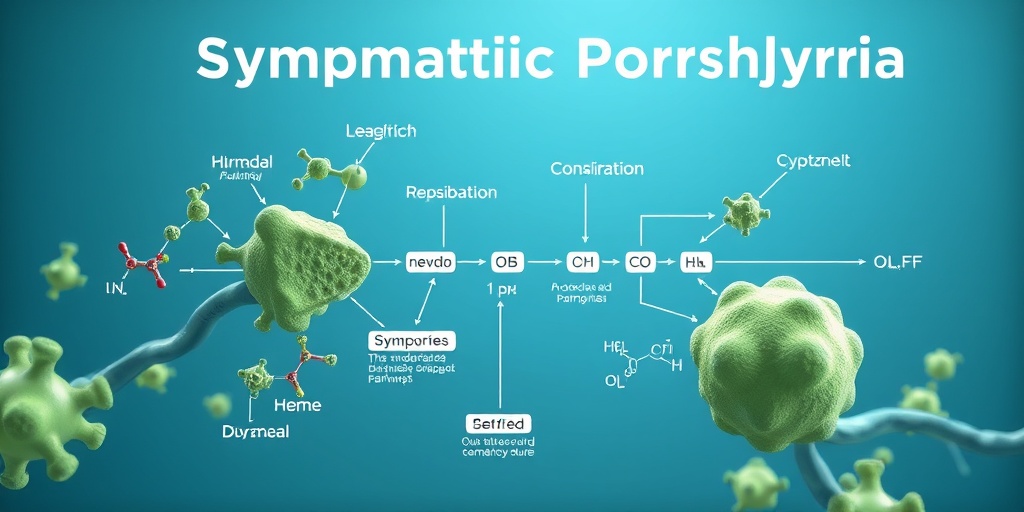
Risk Factors for Porphyria
Understanding the risk factors for porphyria is crucial for early detection and management of this complex group of disorders. Porphyria encompasses a range of conditions that arise from the buildup of porphyrins or porphyrin precursors in the body. These substances are essential for the production of heme, a component of hemoglobin. When heme production is disrupted, it can lead to various symptoms and complications. Here are some key risk factors to consider:
Genetic Predisposition
Many types of porphyria are inherited, meaning they can run in families. If you have a family history of porphyria, your risk of developing the condition increases significantly. Genetic mutations affecting the enzymes involved in heme production can be passed down through generations, making it essential to understand your family’s medical history.
Environmental Triggers
Certain environmental factors can trigger symptoms in individuals predisposed to porphyria. These triggers may include:
- Medications: Some drugs can exacerbate porphyria symptoms. It’s vital to consult with a healthcare provider before starting any new medication.
- Alcohol Consumption: Excessive alcohol intake can lead to acute attacks in susceptible individuals.
- Hormonal Changes: Fluctuations in hormones, particularly during menstruation or pregnancy, can trigger symptoms in women.
- Dietary Factors: A diet low in carbohydrates or high in certain fats may also provoke symptoms.
Age and Gender
Porphyria can affect individuals of any age, but certain types are more common in specific age groups. For instance, acute porphyrias often manifest in late adolescence or early adulthood. Additionally, women are generally more susceptible to developing symptoms due to hormonal influences.
Other Health Conditions
Individuals with certain health conditions may be at a higher risk for developing symptomatic porphyria. These conditions include:
- Liver Disease: Since the liver plays a crucial role in heme production, liver dysfunction can exacerbate porphyria symptoms.
- Diabetes: Some studies suggest a link between diabetes and porphyria, possibly due to metabolic changes.
Diagnosis of Symptomatic Porphyria
Diagnosing symptomatic porphyria can be challenging due to the variety of symptoms and the overlap with other medical conditions. However, a thorough diagnostic process is essential for effective management. Here’s how healthcare professionals typically approach the diagnosis:
Medical History and Symptoms Review
The first step in diagnosing porphyria involves a detailed medical history and symptom assessment. Patients are often asked about:
- Family History: Any known cases of porphyria in the family.
- Symptom Onset: When symptoms began and their frequency.
- Triggers: Any known environmental or lifestyle factors that may have precipitated symptoms.
Laboratory Tests
Once a healthcare provider suspects porphyria, they will typically order a series of laboratory tests to confirm the diagnosis. These tests may include:
- Urine Tests: Measuring porphyrins and their precursors in urine can help identify certain types of porphyria.
- Blood Tests: A blood sample can reveal elevated levels of porphyrins, aiding in diagnosis.
- Stool Tests: In some cases, stool samples may be analyzed for porphyrins.
Genetic Testing
For individuals with a family history of porphyria or when the diagnosis is unclear, genetic testing may be recommended. This can help identify specific mutations associated with different types of porphyria, providing valuable information for treatment and management.
Referral to a Specialist
In complex cases, healthcare providers may refer patients to a specialist, such as a hematologist or a geneticist, for further evaluation and management. These specialists can offer more targeted testing and treatment options tailored to the individual’s needs.
In conclusion, understanding the risk factors and the diagnostic process for symptomatic porphyria is essential for effective management and improving quality of life. If you suspect you may have porphyria or are experiencing related symptoms, it’s important to consult with a healthcare professional for a comprehensive evaluation. 🩺

Treatment Options for Porphyria
Porphyria is a group of rare disorders caused by an overproduction of porphyrins, which are essential for the function of hemoglobin in our blood. Among the various types of porphyria, symptomatic porphyria can lead to a range of debilitating symptoms. Understanding the treatment options available is crucial for managing this condition effectively.
Understanding the Types of Porphyria
Before diving into treatment options, it’s important to recognize that there are several types of porphyria, each with its own unique symptoms and triggers. The most common types include:
- Acute Intermittent Porphyria (AIP): Characterized by severe abdominal pain, neurological symptoms, and psychiatric issues.
- Porphyria Cutanea Tarda (PCT): Often presents with skin lesions and sensitivity to sunlight.
- Erythropoietic Protoporphyria (EPP): Causes painful skin reactions to sunlight.
Each type requires a tailored approach to treatment, especially for those experiencing symptomatic porphyria.
Medical Treatments
For individuals diagnosed with symptomatic porphyria, medical treatments can help alleviate symptoms and manage the condition. Here are some common treatment options:
- Intravenous Hematin: This treatment is often used for acute attacks of porphyria. Hematin helps to reduce the production of porphyrins, thereby alleviating symptoms.
- Glucose Loading: Administering glucose can help suppress the production of porphyrins in some patients, particularly those with acute porphyrias.
- Beta-Carotene: For patients with PCT, beta-carotene may help reduce skin sensitivity to sunlight.
It’s essential for patients to work closely with their healthcare providers to determine the most appropriate treatment plan based on their specific type of porphyria and symptoms.
Lifestyle Modifications
In addition to medical treatments, certain lifestyle changes can significantly improve the quality of life for those living with symptomatic porphyria:
- Avoiding Triggers: Identifying and avoiding triggers such as certain medications, alcohol, and stress can help prevent acute attacks.
- Sun Protection: For those with skin-related porphyrias, using sunscreen and wearing protective clothing can minimize skin damage.
- Dietary Adjustments: A balanced diet rich in carbohydrates may help manage symptoms, particularly in acute porphyrias.
Living with Symptomatic Porphyria
Living with symptomatic porphyria can be challenging, but with the right strategies and support, individuals can lead fulfilling lives. Here are some key aspects to consider:
Managing Symptoms
Effective symptom management is crucial for those with symptomatic porphyria. Regular follow-ups with healthcare providers can help monitor the condition and adjust treatments as necessary. Keeping a symptom diary can also be beneficial in identifying patterns and triggers.
Emotional and Psychological Support
Dealing with a chronic condition can take a toll on mental health. It’s important for individuals with symptomatic porphyria to seek emotional support. This can include:
- Support Groups: Connecting with others who have porphyria can provide a sense of community and understanding.
- Counseling: Professional counseling can help individuals cope with the emotional challenges of living with a chronic illness.
Education and Awareness
Educating oneself about porphyria is empowering. Understanding the condition, its symptoms, and treatment options can help individuals advocate for their health. Additionally, raising awareness about porphyria can contribute to better understanding and support from friends, family, and the community.
In conclusion, while symptomatic porphyria presents unique challenges, a combination of medical treatments, lifestyle modifications, and emotional support can significantly enhance the quality of life for those affected. 🌟

Frequently Asked Questions about Symptomatic Porphyria
What is Symptomatic Porphyria?
Symptomatic Porphyria refers to a group of disorders that result from the accumulation of porphyrins or porphyrin precursors in the body. These substances are essential for the production of hemoglobin, and their buildup can lead to various symptoms, including abdominal pain, skin sensitivity, and neurological issues.
What are the types of Porphyria?
There are several types of porphyria, each with its own specific symptoms and triggers. The most common types include:
- Acute Intermittent Porphyria (AIP)
- Porphyria Cutanea Tarda (PCT)
- Erythropoietic Protoporphyria (EPP)
- Hereditary Coproporphyria (HCP)
How rare is Porphyria?
Porphyria is considered a rare condition, with varying prevalence depending on the specific type. For example, Acute Intermittent Porphyria is estimated to affect about 1 in 20,000 individuals, while other forms may be even less common. 🌍
What are the symptoms of Symptomatic Porphyria?
Symptoms can vary widely among individuals but may include:
- Severe abdominal pain
- Nausea and vomiting
- Neurological symptoms such as confusion or seizures
- Skin sensitivity and blistering in some types
How is Symptomatic Porphyria diagnosed?
Diagnosis typically involves a combination of medical history, physical examination, and laboratory tests to measure porphyrin levels in urine, blood, or stool. Genetic testing may also be conducted to confirm specific types of porphyria.
What treatments are available for Symptomatic Porphyria?
Treatment options depend on the type of porphyria and the severity of symptoms. Common approaches include:
- Avoiding triggers such as certain medications and alcohol
- Intravenous heme therapy for acute attacks
- Supportive care for managing symptoms
Can lifestyle changes help manage Symptomatic Porphyria?
Yes, making certain lifestyle changes can help manage symptoms. These may include:
- Staying hydrated
- Avoiding sun exposure for skin-related symptoms
- Maintaining a balanced diet
Is there a cure for Porphyria?
Currently, there is no cure for porphyria, but many individuals can manage their symptoms effectively with appropriate treatment and lifestyle adjustments. Regular follow-ups with healthcare providers are essential for optimal management. 🩺

